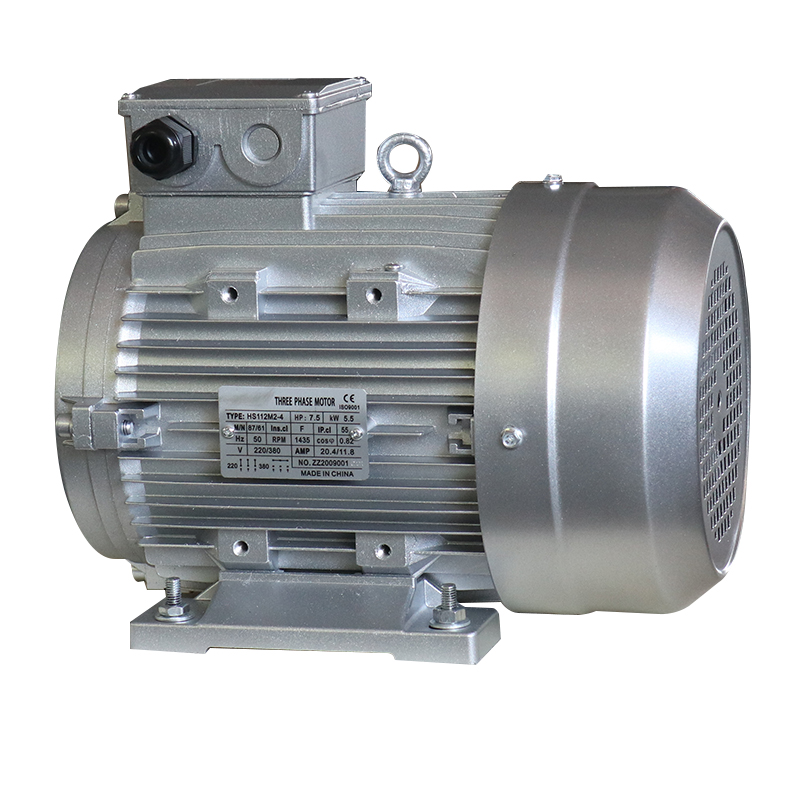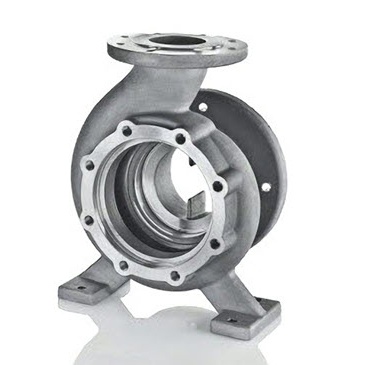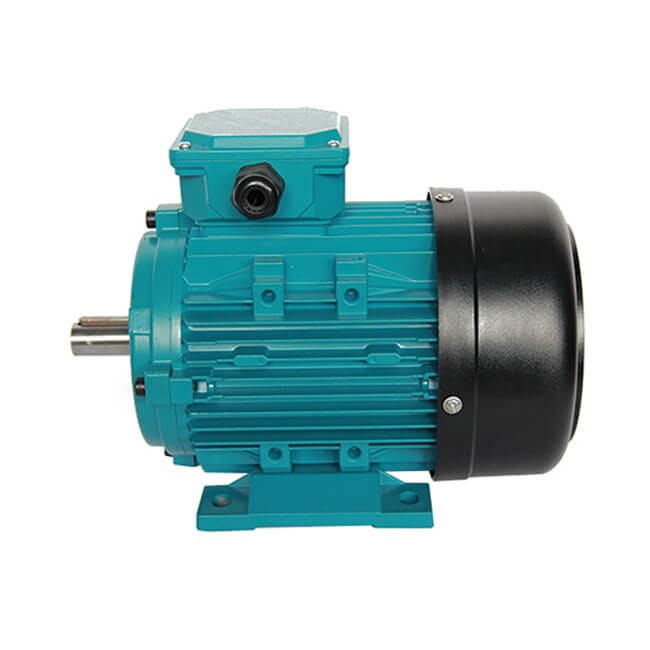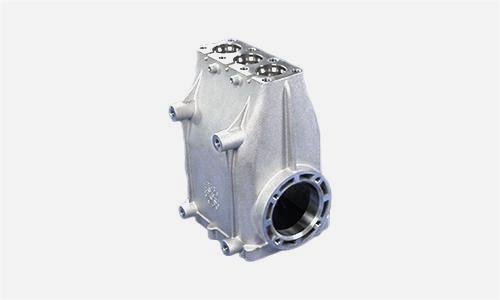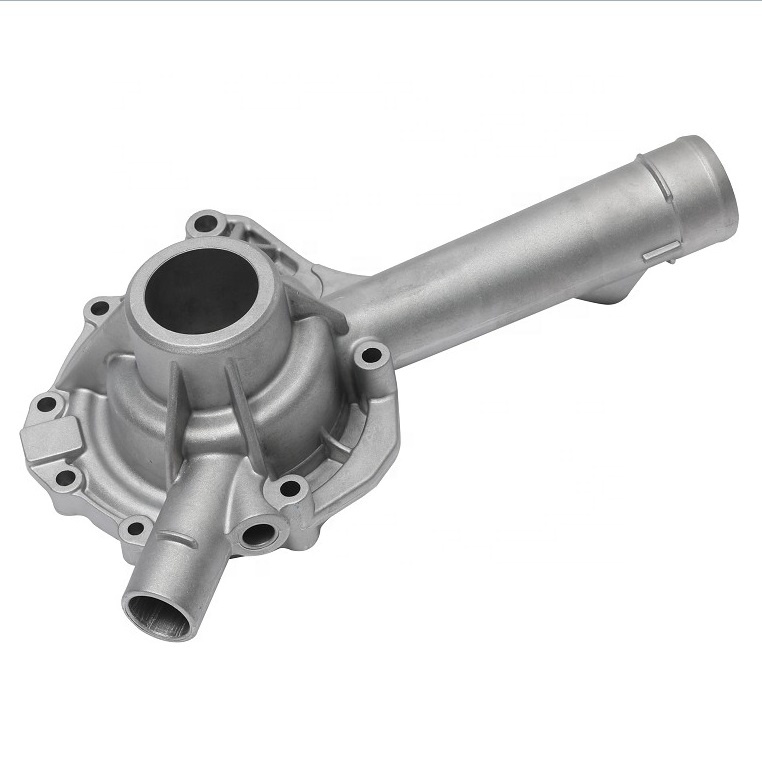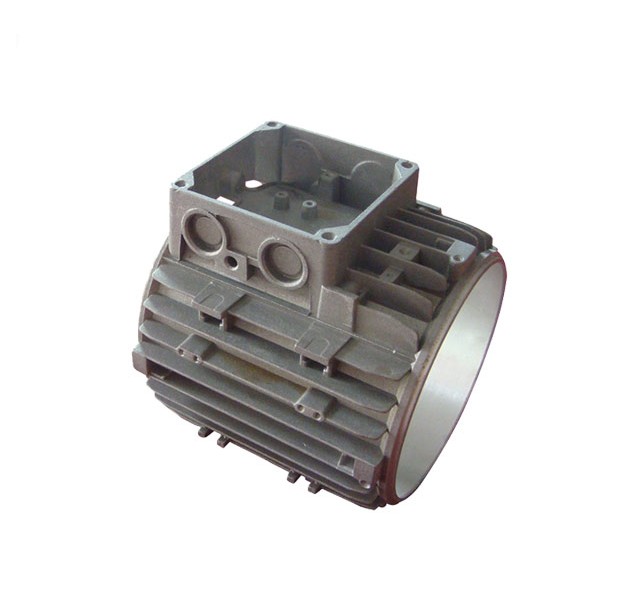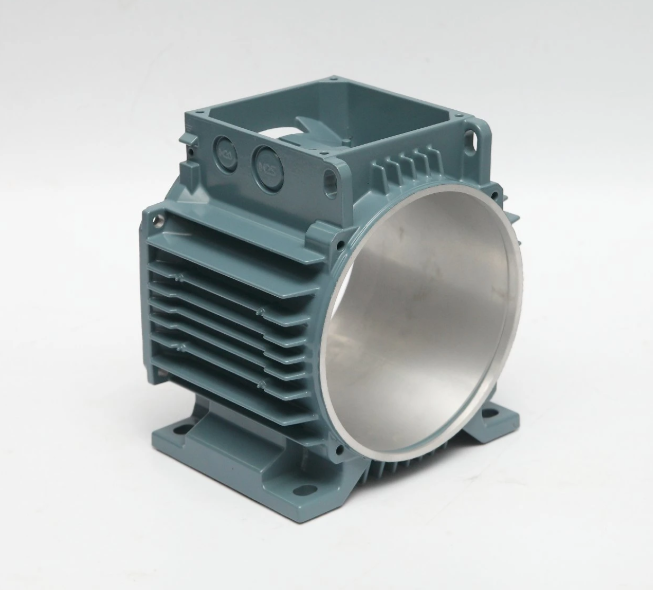Advantages of Aluminum Die Cast Motor Housings
The adoption of aluminum die cast motor housings has become a significant market trend due to its numerous advantages. Many motor manufacturers have transitioned from iron cast motor housings to aluminum die cast ones.
-
Lightweight: Aluminum alloy has a low weight, making die cast motor housings lighter compared to conventional iron cast housings. This lightweight design offers benefits such as improved handling, reduced vehicle weight, and enhanced fuel efficiency.
-
Low Noise: Aluminum die cast housings can be designed with greater flexibility, resulting in reduced noise levels. The material properties and casting techniques contribute to effective noise dampening, leading to quieter motor operation.
-
Excellent Conductivity: Aluminum alloy exhibits excellent heat conductivity, allowing for efficient heat dissipation in motor applications. This helps maintain optimal motor performance by preventing overheating.
-
Cost-Effective: Aluminum alloy is generally more cost-effective than iron. Additionally, the mass production capabilities of the aluminum die casting process result in reduced unit costs. Consequently, an aluminum die cast motor housing can be more affordable than an iron housing of the same size.
Choosing between aluminum and iron for die casting motor housing depends on various factors such as application requirements, budget constraints, and desired properties. Let's compare the two materials:
-
Weight: Aluminum is significantly lighter than iron, making it advantageous for applications where weight reduction is essential, such as in automotive and aerospace industries. Lighter motor housings can improve fuel efficiency and overall performance.
-
Strength: Iron generally has higher tensile and compressive strength compared to aluminum, making it more suitable for heavy-duty applications where the housing needs to withstand high loads and stresses.
-
Heat Dissipation: Aluminum has superior thermal conductivity compared to iron, which means it can dissipate heat more effectively. This makes aluminum ideal for applications that involve high-temperature environments or where heat dissipation is critical.
-
Corrosion Resistance: Aluminum has a natural oxide layer that provides good corrosion resistance. However, in certain environments, such as marine or highly acidic conditions, iron may be preferred for its better corrosion resistance when appropriately coated.
-
Machinability: Aluminum is generally easier to machine than iron, which can be an advantage during manufacturing and repair processes.
-
Cost: Aluminum is often more expensive than iron, which might impact the choice of material, especially for cost-sensitive applications.
-
Electromagnetic Interference (EMI) Shielding: Iron is superior to aluminum in providing electromagnetic shielding, which could be essential for certain motor applications sensitive to EMI.
-
Design Complexity: Aluminum die casting allows for more intricate and complex designs due to its lower melting point, compared to iron.
Ultimately, the choice between aluminum and iron will depend on the specific requirements of the motor housing application, considering factors such as weight, strength, thermal properties, corrosion resistance, cost, and manufacturing considerations. Both materials have their strengths and weaknesses, and the decision should be based on a careful evaluation of the specific needs of the motor housing.
